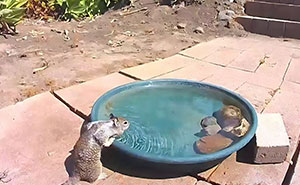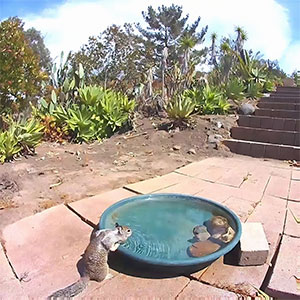But we’ve been gazing into the night sky for much longer. And the appropriately titled X account ‘Space’ is the perfect example of why. It’s dedicated to sharing breathtaking pictures of distant galaxies, nebulae, and planetary wonders, highlighting the awe that floods you whenever you look up. Continue scrolling to check them out and don’t miss the chat we had with astrophotographer Alexander Curry — you’ll find it in-between the images. More info: X | Instagram “I think, like most people, I became interested in astronomy as a child—my father had bought a small SCT telescope as we were both interested in space, and we spent time familiarizing ourselves with the go-to navigation and visual astronomy,” the astrophotographer told Bored Panda. “I think through natural progression once I was a teenager and wanted to experiment more with photography & astronomy, I bought a cheap adapter to mount my DSLR to the back of the telescope and take images of Jupiter, Saturn, and the Orion Nebula (all of the brightest targets in the night sky!), and once I was over the hurdle of being able to get clear images of these targets I was hooked even further and began to read & watch tutorials on how to better process using simple actions in Photoshop, etc.” “This question is a 50/50, as anyone can produce great results with very basic equipment (for example, I recently went on holiday and took some great nebula pictures with just a DSLR and without a tracking mount), however, I think people who are new to astrophotography should learn to understand the limits of their equipment and how it properly functions,” the astronomer explained. “This way, they are not frustrated if they can’t produce the image they wanted the first time around.” But that’s the beauty of it. “I don’t think there is any single astrophotographer who isn’t always learning something new as this hobby changes over time with new software, techniques, and developments in equipment. Creating a great image of any deep space object requires the perfect balance of equipment control and post-processing skills,” he added. With a passionate interest in astronomy and the night sky, Dr. Barnes wondered whether the connection felt by some people to nature in the day would also exist for the night. However, when reviewing the existing scientific literature left him unsatisfied, he set out to do some research himself. “Whether that be the night sky and what it has to offer, but also the impact that light pollution has upon people’s connection to the night sky.” So Dr. Barnes set out to develop a measure that could quantify how connected we feel to the night sky, aptly named the Night Sky Connectedness Index. People respond with how much they agree or disagree and are scored based on their answers. The lowest score is zero, meaning no connection to the night sky, and the highest is 120, which signifies a very strong connection. Dr. Barnes tested this measure of night sky connectedness on more than 400 people, and he also gave them tests rigorously developed in previous studies to measure their levels of happiness, resilience, and mental well-being. The findings were published earlier this year, and Dr. Barnes suggests that the connection may stem from the mindfulness people experience while stargazing—the chance to be fully present and embrace the awe that washes over us when we look at the night sky. Time spent under the stars may have physiological effects similar to spending time in nature during the day, including decreases in blood pressure, reported stress, and cortisol levels, Dr. Barnes said. “So we really enter this state of physiological relaxation which is good for us. The more we do those kind of things, the more likely we are to see these wellbeing benefits.” “First and foremost, both my and other people’s pictures give such a sense of awe and curiosity as we consider the size and beauty of these objects and how they are natural occurrences on a scale that we can’t comprehend.” “Secondly, some of the photos from satellites inside our own solar system can give a sense of perspective to our place in the universe, the very famous voyager image ‘Pale Blue Dot’ just shows how tiny we are even just in the perspective of our own solar system and when you look at nebulae and galaxies and see billions of solar systems similar to ours it really shows how vast and fascinating our universe is.” “Being able to see pictures of obscure objects and things in the night sky that you wouldn’t see published regularly can really inspire and give a sense of ‘cosmic wonder’ to people who may already be interested in space but want to discover something deeper,” he explained. Hopefully, they will help you achieve it as well! Follow Bored Panda on Google News! Follow us on Flipboard.com/@boredpanda! Please use high-res photos without watermarks Ooops! Your image is too large, maximum file size is 8 MB.



































































































